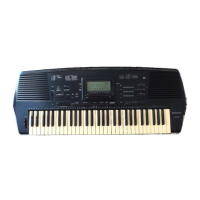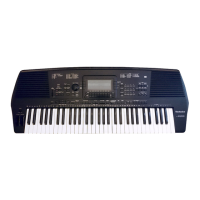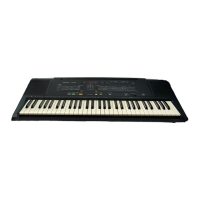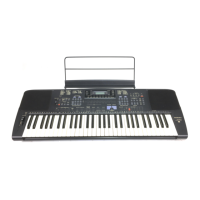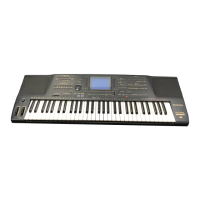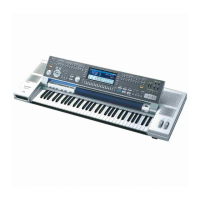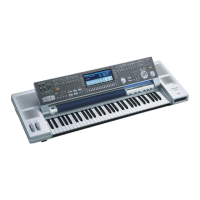
Do you have a question about the Technics SX-KN6000 and is the answer not in the manual?
| Brand | Technics |
|---|---|
| Model | SX-KN6000 |
| Category | Electronic Keyboard |
| Language | English |
Instructions for replacing the fuse in the power plug.
Safety guidelines for installation, power, and handling the unit.
Warnings about internal components and protection from water.
Advice on maintenance and how to handle abnormal operations.
Explanation of sound controller and rhythm group buttons.
Details on pitch bend/modulation wheels and performance pads.
Information on display, panel memory, and transpose functions.
Overview of conductor, sequencer, and music stylist features.
Essential steps for setting up the instrument before use.
Guide on selecting sounds and playing the keyboard.
Applying chorus and reverb effects to sounds.
Modifying sound using trackball, pitch bend, and vibrato.
Selecting musical categories and styles using the Music Stylist.
Selecting music styles and playing the keyboard.
Setting up automatic panel configurations with One Touch Play.
Using chords to activate automatic rhythm patterns.
Recalling favorite panel settings using a single button.
Initial steps for recording performances with the sequencer.
Playing back recorded performances and resetting the sequencer.
Steps for saving data, including disk formatting.
Steps to load data from a floppy disk.
Recording and recalling favorite panel settings.
Introduction to the instrument's sound and effect capabilities.
Guide on selecting desired sounds for playback.
Explanation of the Auto Play Chord feature and its operation.
Saving current panel settings into memory banks.
Recording a phrase into a user bank.
Introduction to the sequencer's capabilities.
Step-by-step guide for easy recording.
Detailed steps for realtime performance recording.
Instructions for playing back recorded sequencer data.
Recording over specific sections of a performance.
Recording notes one by one.
Adjusting recorded note timing using quantize.
Editing note parameters like pitch and velocity.
Choosing data sections for copying and pasting.
Editing note positions and pitches of recorded data.
Introduction to the composer feature.
Creating new rhythms using the easy composer.
Step-by-step process for recording composer parts.
Copying specific measures.
Introduction to disk drive capabilities.
Loading data from disk.
Information about floppy disks and formatting.
Step-by-step process for saving data.
Introduction to sound adjustment and editing features.
Configuring part settings like key shift and volume.
Adjusting sound parameters via the mixer display.
Overview of reverb and effect menu items.
Introduction to sound editing capabilities.
Adjusting basic sound attributes.
Editing individual tones.
Adjusting key shift and detune.
Editing filters and equalizers.
Adjusting volume levels.
Adjusting LFO parameters.
Editing digital effects and reverb.
Assigning functions to controllers.
Overview of control-related functions.
Overview of customizable settings.
Explanation of MIDI and its terminals.
Restoring factory settings.
Common symptoms and their solutions.
Explanations for various error messages.
Detailed technical specifications of the keyboard.
